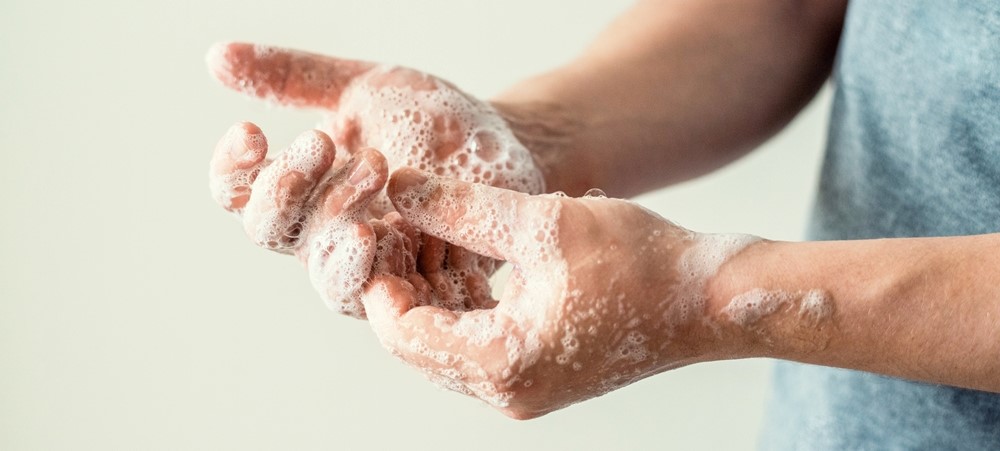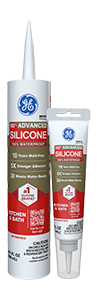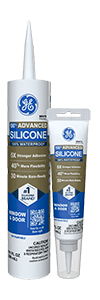Note: This DIY article is provided as a general guide only and is not intended to replace product-specific installation procedures; always follow applicable manufacturer’s instructions. Depending on your home’s age and condition, location within the house, and other potential factors, repairs and/or upgrades or other services may be necessary prior to the beginning and/or completion of your project that may involve the services of a home improvement professional. This article does not include advice pertaining to local building codes and/or any related inspections.
How are you supposed to clean up a product that’s waterproof and meant to last ten years? It’s not usually as simple as soap and water. But it also doesn’t have to be a nightmare situation where you’re scraping unwanted silicone sealant off a client’s bathroom floor or your hands for hours.
We’ll give you the inside scoop on how to clean up after a job, including how to get sealant off your hands, equipment, and surrounding area.
Be proactive: Tips for avoiding a mess when using silicone sealant
How do you get sealant off easily? Start by proactively avoiding sealant messes.
Here are a few tips to keep your area sealant-free, other than the spots you want to seal:
- Wear gloves to keep it off your skin
- Keep bare skin wet to prevent silicone from sticking to the skin
- Lay down cloth on the floor where you are working
- Use tape when necessary to avoid getting silicone where it shouldn’t be
To remove silicone sealant from your hands, peel off the excess, wash with soap and water before it dries, use an adhesive, then fall back on home remedies for the stubborn spots.
How to get silicone sealant off your hands and equipment
Messes are bound to happen when you are sealing a room, and sealant is sure to end up on your hands, surrounding areas and all over your equipment. Here are our tried-and-true tips for cleaning up a sticky sealant situation without damaging your skin or equipment.
Clean with soap and water
Most silicone sealants are not immediately waterproof. Many GE Sealants take about thirty minutes before they become waterproof. Double check your product as there are some that may take longer. If you catch a mess on your hands or equipment early enough, cleaning up may be as simple as washing with soap and water.
Remove the caulk by hand
Some silicone caulk can be removed by peeling or rubbing it off after it dries. This is the best way to start the cleaning process, as it will remove any large pieces. You’ll be left with minimal cleanup afterward, making all the other options much easier to complete.
Even if you must resort to other methods to remove the silicone sealant from your hands, you will still want to end with soap and water. It helps remove some of the remaining residue or oils and chemicals from the other removal methods.
Use silicone remover
There are chemicals designed specifically for removing silicone sealant. Wash your equipment or, if the remover says it’s safe, your hands. If you do use any type of chemical, be sure you’re working in a well-ventilated area.
If you don’t have a silicone remover, paint thinners also work. Remember, if you use paint thinner, only use it for your equipment. Paint thinners contain harmful chemicals that will hurt your skin.
Scrub or abrasive
Some silicone sealants will be more stubborn and won’t wash off with soap or even silicone remover. A strong scrub brush along with those methods will help peel it off your skin and equipment. It works best with soap and water for a dual attack method.
Use a professional’s home remedy
You tried the above methods and are still baffled as to how to remove sealant from skin.
While there are common methods for cleaning up silicone sealant, professionals often have their insider secrets for getting tough pieces off their hands and equipment. You may need to try these if you left the sealant for too long and it has fully dried.
Here are some of the top tips:
- Use butter on your hands, followed by baking soda. The butter’s oil helps unstick the sealant, while the baking soda acts as an abrasive.
- White vinegar is strong enough to wash some stubborn silicone sealant.
- Isopropyl alcohol, commonly found in rubbing alcohol, can work to remove silicone sealant. Rub it on your hands, then wipe it off using a cloth or abrasive material.
- Acetone, found in nail polish remover, is not healthy to regularly apply to your skin, but can work in a pinch.
- Rub the silicone with cheap plastic as silicone sticks better to plastic than it does to skin.
- Goo Gone works well on sticky messes, including silicone sealant. You can use it occasionally to help remove silicone from your hands, but avoid using it regularly as it isn’t meant to be a skin product.
If you have gone through this entire list and there is still silicone stuck to you, you may just need to wait it out. Your skin will eventually shed it naturally over time.
How to get silicone sealant off a wall
When you spill silicone on floors or in your work area, wiping it with soap and water might make the situation more messy. Instead, opt for using a scraper to delicately remove the excess silicone. This will allow you to preserve your work without smearing around the extra silicone.
You can also use a silicone remover to gently remove it from certain surfaces. Just be aware of the surface you’re working on. Silicone remover is very potent and can strip paint and other coats and sealants.
How to clean up after removing sealant
While silicone may look runny like a paste, it should not go down a drain. Silicone sealant can harm the environment, which is why many regions have strict regulations about disposal.
Because silicone isn’t biodegradable, you shouldn’t throw it out with regular trash as it won’t break down in a landfill. A hazardous waste facility will usually accept silicone. Some regular recycling companies also have hazardous waste services.
Place all excess silicone in a special recycling container and bring it to a recycling program to dispose of the product.
While cleaning silicone sealant off your hands can be frustrating, seeing that quality seal on a project is rewarding. A silicone sealant that refuses to budge will last longer and hold stronger than cheap alternatives that wash off with soap and water.
GE Sealant offers silicone sealants for all your sealing needs. They may come off your hands and equipment, but will stick to your projects for years.
Find sealants in a store near you.



